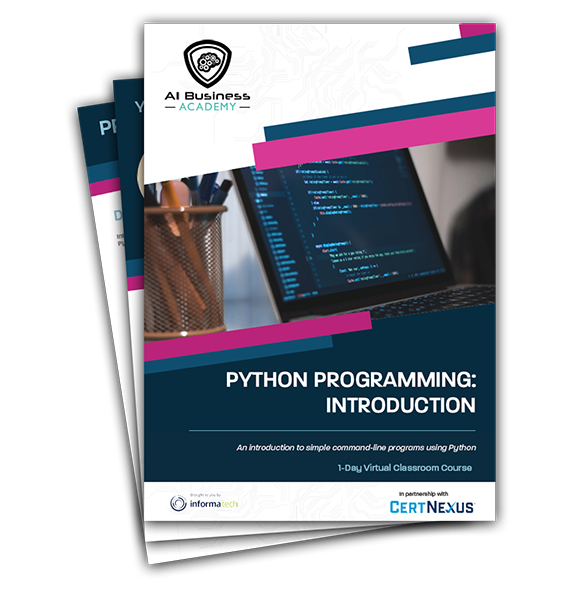Python Programming: Introduction
2 x 4 Hour Session (2 Days)

Course Overview
2 x 4 Hour Session (2 Days)
Course Objectives
In this course, you will develop simple command-line programs in Python, including:
○ Set up Python
○ Develop a simple application
○ Declare and perform operations on simple data types
○ Perform operations on strings, numbers & dates
○ Performa operations on data structures & lists
○ Perform operations on ranges, tuples & dictionaries
○ Write conditional statements & loops
○ Define and use functions, classes & modules
○ Manage files & directories through code
○ Deal with exceptions

Programme Agenda
Lesson 1: Setting Up Python and Developing a Simple Application
- Topic A: Set Up the Development Environment
- Topic B: Write Python Statements
- Topic C: Create a Python Application
- Topic D: Prevent Errors
Lesson 2: Processing Simple Data Types
- Topic A: Process Strings and Integers
- Topic B: Process Decimals, Floats, and Mixed Number Types
Lesson 3: Processing Data Structures
- Topic A: Process Ordered Data Structures
- Topic B: Process Unordered Data Structures
Lesson 4: Writing Conditional Statements and Loops in Python
- Topic A: Write a Conditional Statement
- Topic B: Write a Loop
Lesson 5: Structuring Code for Reuse
- Topic A: Define and Call a Function
- Topic B: Define and Instantiate a Class
- Topic C: Import and Use a Module
Lesson 6: Writing Code to Process Files and Directories
- Topic A: Write to a Text File
- Topic B: Read from a Text File
- Topic C: Get the Contents of a Directory
- Topic D: Manage Files and Directories
Lesson 7: Dealing with Exceptions
- Topic A: Handle Exceptions
- Topic B: Raise Exceptions
